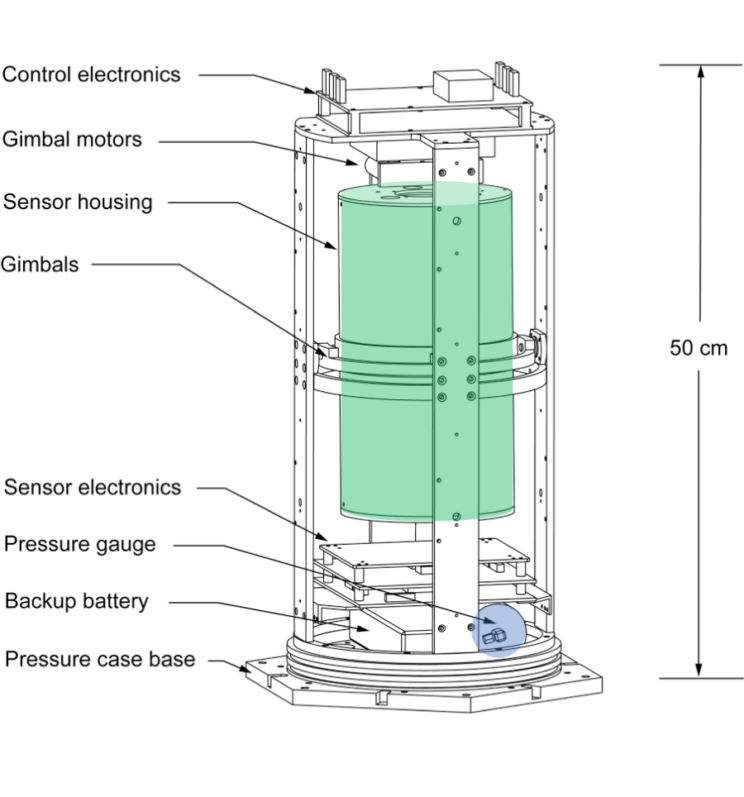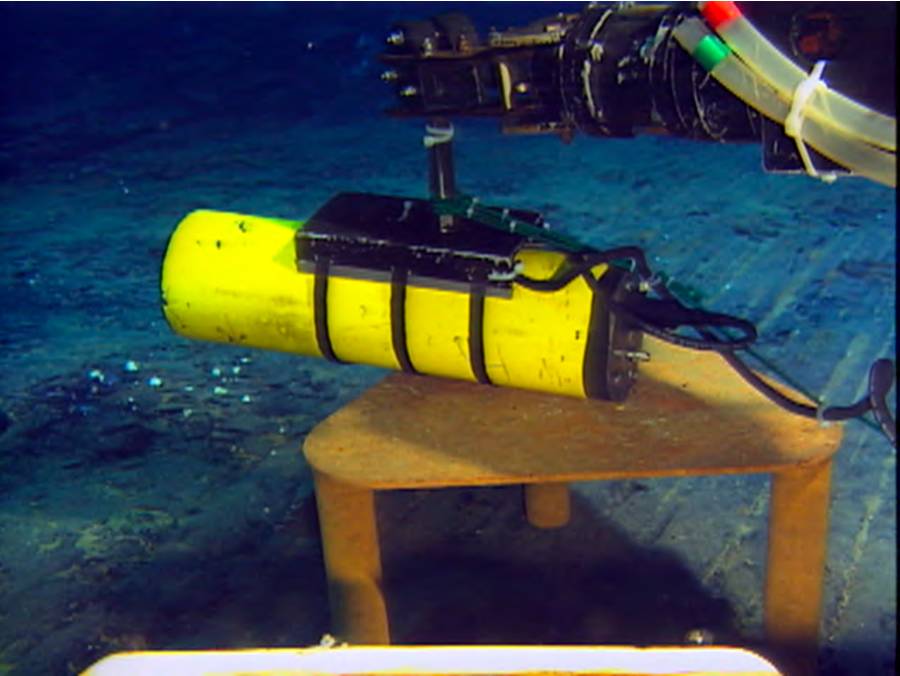Measuring Seafloor relative height
Seafloor height surveys
Subsidence or uplift can be monitored with pressure-only surveys, using a smaller instrument package than ROVDOG.

A cross-section of a ROVDOG II instrument. The pressure gauge is seen in the lower right with blue color. After Zumberge (2008).
For projects where vertical seafloor deformations are the sole interest, pressure may provide about twice the sensitivity of gravity (4 mm height change cause about 1 µGal gravity change at the seafloor). One can then carry out height-only (pressure) surveys. The survey concept with seafloor benchmarks, reference pressure gauges and sequential station visits by an ROV-carried instrument will be the same as for ROVDOG. The instrument package can be made significantly smaller. This is illustrated with the interior of ROVDOG II. The blue pressure sensor is much smaller than the gravity sensor (green).
Pressure sensors are drifting less than gravity sensors and fewer repeat measurements are needed to control the drift. Shorter measurements are usually needed as recovery effects are less in pressure than in gravity. The ROV operation can be slightly faster with a smaller instrument package. In all, perhaps 5-15 % survey time can be saved for a pressure-only survey. For most cases, the small extra cost of recording gravity has been considered worth it.
An pressure-only instrument was used in an academic study of the Axial Seamount in the Pacific Ocean (Chadwick et al., 2006). They termed their instrument a mobile pressure recorder (MPR). Quad Geometrics can make pressure-only instrumentation on demand.

A mobile pressure recorder (MPR) held by the manipulator arm on a benchmark during a pressure measurement at Axial Seamount in 2004. From Chadwick et al., (2006).